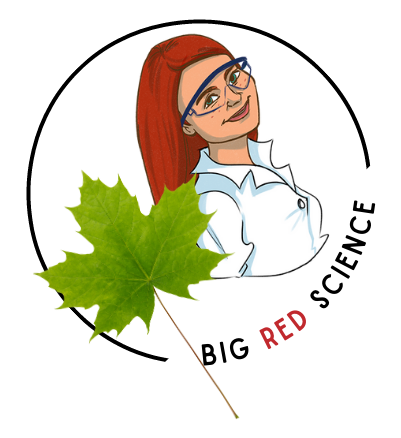The “Diversity of Life” unit in Gr. 11 Biology (SBI3U) used to be one of my least engaging units in any of my science classes. Classification, taxonomy, and biodiversity are gigantic topics and can feel overwhelming to properly guide students through.
Other than a big project where we went outside and took photos to classify, I felt like it was stale. Despite the fact that I LOVE learning about nature and living things, I had to revamp my unit after only a couple of years because it wasn’t up to snuff.
Now? LOVE IT.
It’s a great way to start Gr. 11 Biology! The activities that are highlighted below are now staples, and they can be used in any course that teaches classification, taxonomy, biodiversity, the 6 Kingdoms, or even evolution.
Check ’em out!
1) Caminalcules
Caminalcules are a fictive group of animal-like organisms, which were created as a tool for better understanding phylogenetics in real organisms. They were created by Joseph H. Camin from the University of Kansas and consist of 29 living ‘species’ and 48 fossil forms.

I use this set of organisms to introduce the concept of a phylogenetic tree by having students build it on a large piece of paper in small groups following a short set of rules.

The task always seems impossible to them first but they quickly realize it’s totally doable. An amazing hands-on activity that you need to do!
Also a great connection between the Diversity of Living Things unit and the Evolution unit, so hang one of the completed trees on the wall to refer back to when the time comes.
The Caminalcules can be downloaded here.
2) Binomial Nomenclature Cards
These cards are my own creation, and I designed them with the idea that they’d be multipurpose. Open-ended activities are usually a win, right?
This set can be found in my TpT store, but you can also DIY it by doing some research and finding clipart or photos.

These cards show 105 different animals, and there are 3 sets. One set labels them with common names, one set labels them with their scientific names, and one set has no names.

How would you use them in class?
I like starting the Diversity of Living Things unit by giving pairs of students 12-15 cards and asking them to group them. I tell them there’s no right or wrong answer, but they should be able to justify how they grouped them.
This can lead to conversation about what a daunting task taxonomy is, and how it hasn’t been static over time.
Plus students inevitably end up with some kooky reasoning that amuses everyone!
Here are a few other quick options:
- Have students compare scientific names and common names and try to make connections
- Hand out 2 or 3 to each student and have them research its levels of classification from domain to species. Then, set students loose and have them find the most closely related species in the class. What discussion comes from this? Any surprises?
- Pick a few at random and research their levels of classification as a class or in groups. Have them research what each taxon means and share! For example, did they know class mammalia means that these animals feed their young with their milk? Did they make the connection between “mammal” and “mammary glands”? This type of simple discovery always leads to light bulb moments
- Use the cards throughout the year to randomly assign partners (common name and scientific name of the same species are a pair).
- Select some organisms that are closely related and use them to create a phylogenetic tree ( https://phylot.biobyte.de/ can be a helpful website for this).
3) Fecal Transplant Case Study
Tired of lecturing about the 3 DOMAINS?
Try introducing them through a case study about the microbiome!
“We Are Not Alone” can be accessed for free via NSTA (sign up here for free) and it’s a game-changer in my Diversity of Living Things unit.

It follows the changes in the microbiome of a young woman who has a Clostridium difficile infection and eventually needs to get a fecal transplant. I have a more detailed post about it here.
This is amazing science!
We know that content is anchored through storytelling, and well…students remember stories about poop!
I have free supplementary materials to do this case study in my TpT store.
4) Taxonomy Instagram Project
This has become one of my favourite projects in any of my classes! I have a more detailed explanation of it in this post.
Students are assigned a Domain, Kingdom, or Phylum and they need to create a fake Instagram profile for it.
They’re given a template and have to create a photo spread and captions to present an overview of the taxon they select.
The photo spread must also include short facts and a 6-word memoir so that you can learn about the taxon at a glance. A separate sheet is submitted with properly referenced captions for each “post”.

At the end of the project, we have a class set of beautiful posters that can be displayed to teach others about various categories of living things!
If you’re looking for a “done for you” version that includes rubrics, grab it from my TpT store here. Students loved this project!
5) iNaturalist

Do you and your students use the iNaturalist app?
It’s a project and online network of naturalists, citizen scientists, and biologists who work together to take photos and map species all around the world. It can be accessed through phones or desktops, so why don’t you take your class outside and start classifying species on your school grounds?
There is also a version called Seek that is educational for students as they’re learning to properly classify.
My students LOVE this! So many came in over the week after we did it to show me what they had classified in their own neighbourhoods. Can we ask for anything more as teachers??
This can be a fun app to explore while discussing biodiversity or classification. It’s also just a fun way to get students outside and exploring their own school yard. 10/10, 5 stars, highly recommend!
6) Pond Water Lab

This is a classic activity to science teachers, but it gets students excited every year!
In a nutshell, you and your students collect water from a local source and create wet mounts. They can then use their microscope skills to find, identify, and draw biological diagrams of microorganisms. They might have NO idea that a drop of water can contain things like insect larva, algae, protozoa, tardigrades, or bacteria.
Their minds will be BLOWN!
Get ready to witness them discover the wonder of science and the natural world!
Lots of versions of this lab exist out there, but head here if you’d like one that includes:
⭐️Detailed Teacher Guide
⭐️Student Handout of Lab Activity
⭐️Curated links to relevant sources to help students identify microorganisms
⭐️2 rubrics for assessment of learning + ideas for assessment for learning and as learning (including for a conversation assessment)
⭐️1-page Quick-Use Microscope Guide + diagram


Those are some of fave ways to bring the “Diversity of Living Things” unit to life! I’d love for you to share any ideas you have by shooting me an email at bigredscience@gmail.com!
Are you an ONTARIO SCIENCE TEACHER?
Me too! Click here if you’d like some specific science content that’s aligned to the Ontario curriculum, Growing Success, and all that as, of, for jazz that we know and love! (I promise you won’t be overloaded with emails!)
Scientifically Yours,
Mo
Looking for other teaching ideas? Check out:
6 Ways to Use 6-Word Memoirs in Science
Engage Students in Classification with…Fecal Transplants!?
5 Easy Ongoing Science Activities to Engage Students All Year
3 Easy Ways to Bring Your Science Classes Outside
What You Need To Do ON Lab Day To Ensure Things Run Smoothly
What You Need To Do BEFORE Lab Day To Ensure Things Run Smoothly
3 Creative Science Bulletin Boards for High School
Low-Pressure Icebreakers for the Science Classroom
7 Super Helpful Tips for New Science Teachers
The #1 Thing Teachers Wish They Learned in Teachers College
How to Guarantee that Your Students Will Remember What They Learn


